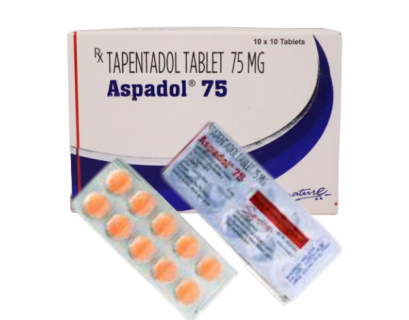Gabapentin is a widely prescribed medication for managing nerve pain, epilepsy, and other conditions. While it is highly effective, determining the correct dosage is crucial for achieving optimal results without adverse side effects. The common question faced by many patients and healthcare providers is: Gabapentin 100mg or 400mg—which dosage is right? In this article, we’ll provide an in-depth analysis to help navigate this dosage dilemma.
What Is Gabapentin 400mg and How Does It Work?
Gabapentin 100mg is in a class of medications called anticonvulsants. Gabapentin 100mg treats seizures by decreasing abnormal excitement in the brain. It primarily works by altering calcium channel activity in nerve cells, which reduces the transmission of pain and seizure signals. This makes it a popular choice for conditions such as:
- Neuropathic pain: Chronic pain resulting from nerve damage.
- Epilepsy: Used as an adjunct treatment for partial seizures.
- Postherpetic neuralgia: Pain following shingles.
- Off-label uses: Anxiety, migraines, and hot flashes.
Understanding its mechanism of action is key to grasping why proper dosing matters.
Why Is Gabapentin 400mg Dosage Important?
An anticonvulsant called Gabapentin 400mg works by reducing aberrant brain activity to cure seizures. By altering how the body perceives pain, it also lessens PHN suffering. The precise mechanism of action of gabapentin 400mg in treating restless legs syndrome is unknown, though.
Choosing the correct gabapentin dosage is essential to balance efficacy and safety. A low dose, such as 100mg, may be sufficient for mild symptoms, while higher doses like 400mg are often reserved for more severe conditions. Overdosing or underdosing can lead to complications, including:
- Insufficient symptom relief
- Excessive sedation or dizziness
- Risk of dependency with prolonged use
Gabapentin 100mg: The Low-Dose Option
When Is 100mg Prescribed?
The 100mg dose is typically recommended for patients who are:
- New to gabapentin and require a gradual introduction to the medication.
- Experiencing mild neuropathic pain.
- Elderly or have impaired kidney function, where lower doses reduce the risk of side effects.
Advantages of Gabapentin 100mg
- Minimal side effects, such as drowsiness or dizziness.
- Allows for titration, where the dose can be gradually increased as needed.
- Suitable for sensitive populations.
Potential Limitations
While safer for initial use, the 100mg dosage may not provide adequate relief for moderate to severe symptoms. In such cases, patients might experience frustration with the slow onset of therapeutic benefits.
Gabapentin 400mg: The Higher-Dose Approach
When Is 400mg Prescribe?
The 400mg dose is often utilized for:
- Moderate to severe neuropathic pain.
- Chronic conditions requiring sustained symptom management.
- Patients who have already tolerated lower doses without issues.
Advantages of Gabapentin 400mg
- Provides more potent pain relief for severe symptoms.
- Reduces the need for frequent dosing by offering a stronger effect per tablet.
- Can be integrate into combination therapy for complex conditions like refractory epilepsy.
Potential Risks
- Increased likelihood of side effects, including sedation, dizziness, or fatigue.
- Risk of developing tolerance, where the medication becomes less effective over time.
- Greater strain on kidney function, especially in vulnerable populations.
How to Decide Between 100mg and 400mg?
Step 1: Consult Your Healthcare Provider
A healthcare provider will evaluate your medical history, current symptoms, and lifestyle before prescribing the appropriate dose.
Step 2: Start Low and Go Slow
For most patients, the 100mg dose serves as a starting point. Dosage adjustments are then made base:
- Symptom response
- Tolerability of side effects
- Underlying medical conditions
Step 3: Monitor for Side Effects
Common side effects to watch for include:
- Dizziness
- Drowsiness
- Nausea
- Swelling in extremities
Patients on higher doses, such as 400mg, should be particularly vigilant about these symptoms.
Understanding Gabapentin 400mg Titration
Titration involves gradually increasing the gabapentin dosage over days or weeks. A typical schedule might look like this:
- Start with 100mg at night for the first few days.
- Increase to 200mg per day (split into two doses).
- Gradually escalate to 400mg or more if symptoms persist and side effects are minimal.
This approach minimizes the risk of sudden side effects and ensures optimal therapeutic outcomes.
Special Considerations for Gabapentin 400mg Dosage
Kidney Function
Gabapentin is excretes through the kidneys, making dosage adjustments critical for patients with reduced kidney function. Such individuals often start with 100mg and increase cautiously under medical supervision.
Elderly Patients
The elderly may experience enhanced side effects due to slower metabolism. A low dose, such as 100mg, is typically safer for this population.
Pregnancy and Breastfeeding
Gabapentin’s safety during pregnancy and breastfeeding remains uncertain. Dosages should be carefully consideres, with 100mg being a safer initial option.
Common Questions About Gabapentin 400mg Dosage
Can I Switch From 100mg to 400mg Directly?
No, direct jumps in dosage are not recommend. Instead, a gradual increase helps prevent adverse reactions.
What Should I Do If 400mg Isn’t Effective?
In cases where 400mg is insufficient, higher doses or combination therapies may be explore. Always consult your healthcare provider before making changes.
Are There Alternatives to Gabapentin400mg?
Yes, medications like pregabalin (Lyrica) and duloxetine may be consider if gabapentin proves ineffective.
Conclusion: Which Dose Is Right for You?
The choice between gabapentin 100mg and 400mg depends on individual circumstances, including the severity of symptoms, medical history, and response to treatment. Starting with 100mg and titrating upwards is a common approach that balances effectiveness and safety. However, patients with severe conditions may benefit from the stronger 400mg dose under close medical supervision.













